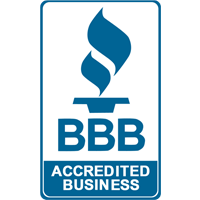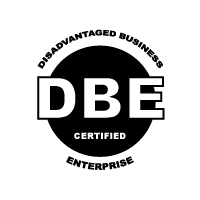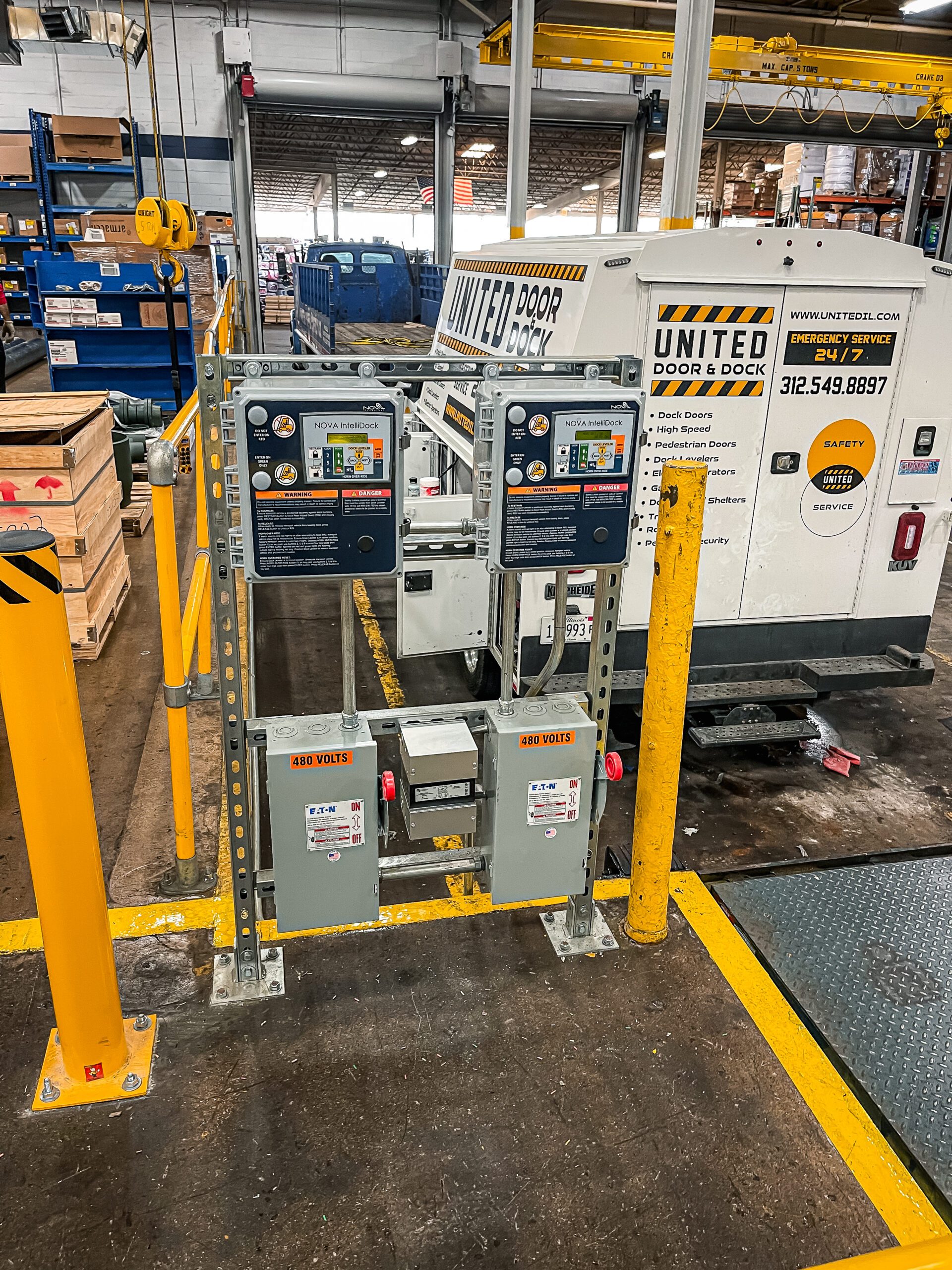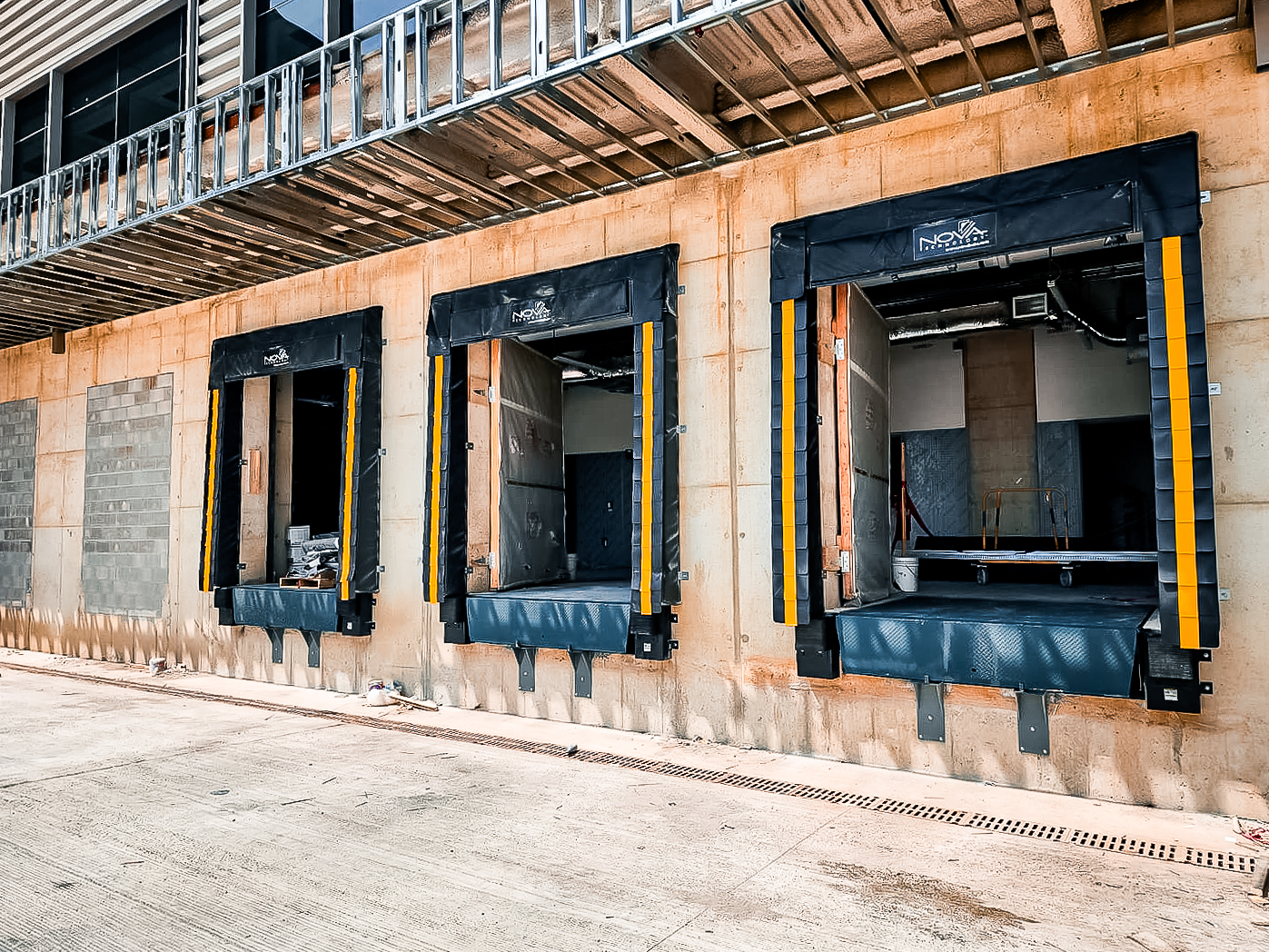In the world of commercial loading docks, efficiency, safety, and productivity are crucial to the overall success of any business. As the demand for quicker and more reliable supply chain operations grows, the need for advanced technology in the loading dock sector is more significant than ever. Enter commercial dock door and leveler automation: the future of the industry. At United Door and Dock, we consider ourselves innovators and ensure we live up to that title.
We will explore the benefits and features of automated dock systems, discuss the latest innovations, and touch on the challenges and considerations for businesses looking to adopt this cutting-edge technology. This includes hydraulic dock levelers, truck restraints, and control panels. Continue reading if you want to learn more!
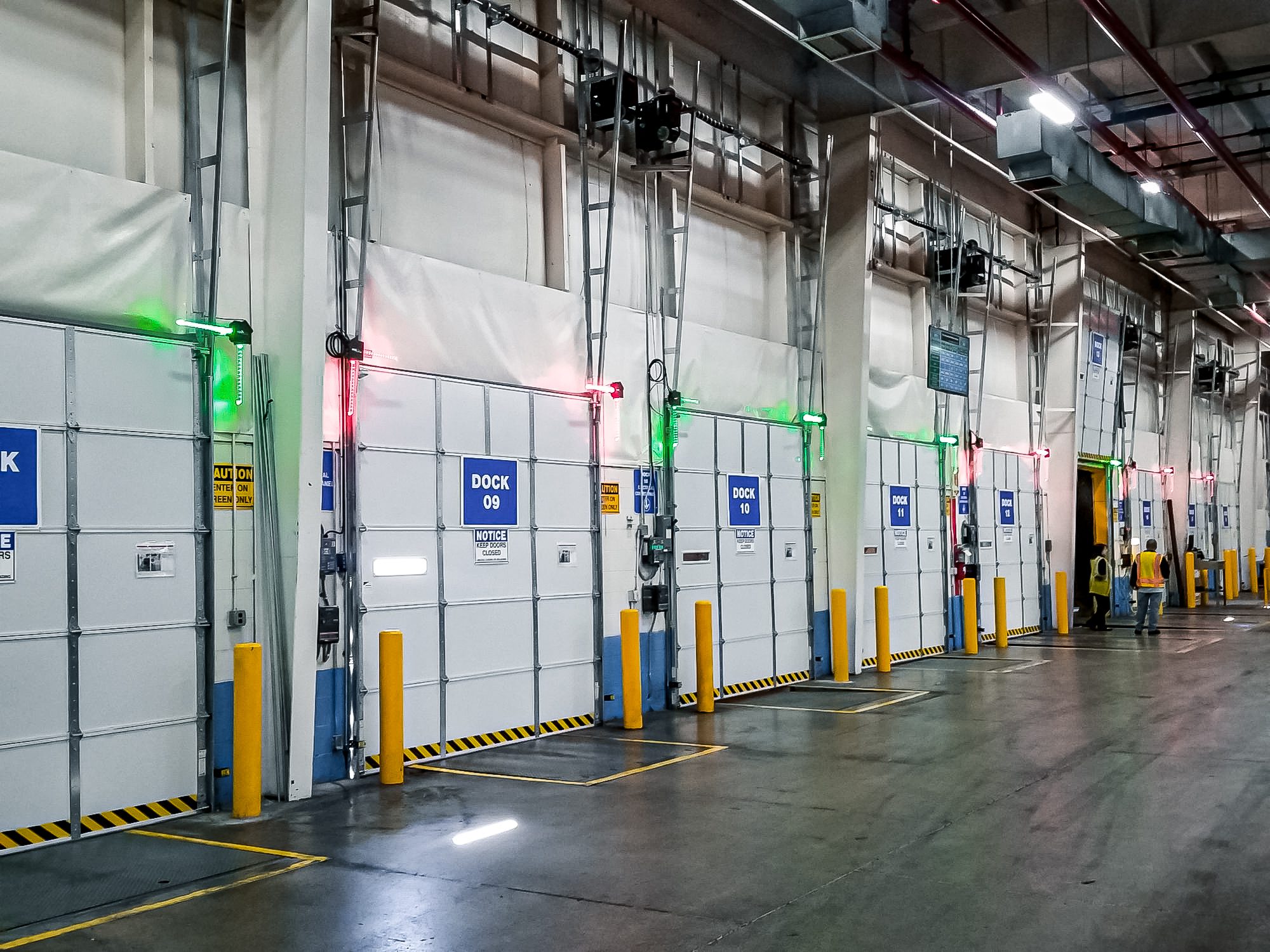
What is Dock Door and Leveler Automation?
Dock door and leveler automation refers to the integration of advanced technology in the operation of loading dock doors and levelers. This technology allows for more precise control, streamlined processes, and enhanced safety. Automated systems can include features such as automated door openers, leveler position sensors, and intelligent communication systems between various dock components. The ultimate goal is to minimize human intervention, reduce the risk of accidents, and optimize productivity in the loading and unloading process.
Benefits of Dock Door and Leveler Automation
- 1
Enhanced Safety
Automated dock systems are designed to minimize the need for manual labor in the loading dock area, reducing the risk of accidents and injuries. With sensors and cameras in place, automated systems can detect potential hazards and either alert operators or take corrective action. Automation significantly increases safety in and around the loading dock area by reducing the likelihood of human error.
- 2
Improved Efficiency
Dock automation streamlines the loading and unloading process, leading to faster turnaround times and shorter truck wait times. Smart systems can predict when a truck is about to arrive and automatically prepare the dock for loading or unloading. This eliminates unnecessary delays and ensures a smooth, efficient process from start to finish.
- 3
Lower Operational Costs
Automating dock doors and levelers can lead to significant cost savings for businesses. By minimizing manual labor and reducing the time it takes to load and unload trucks, companies can cut down on labor costs and overtime. Additionally, automated systems can reduce the need for costly repairs and maintenance by catching potential issues before they become significant problems.
- 4
Energy Savings
Automated dock door systems can reduce energy consumption by ensuring that doors are closed when not in use, limiting the amount of outside air that enters the facility. This can be particularly beneficial in climate-controlled environments, where maintaining a consistent temperature is essential. By reducing energy waste, businesses can lower their energy bills and reduce their carbon footprint.
- 5
Data Collection and Analysis
Automated dock systems are capable of collecting valuable data on loading dock operations. This information can be used to identify inefficiencies, track performance metrics, and make informed decisions about process improvements.
Latest Innovations in Dock Door and Leveler Automation
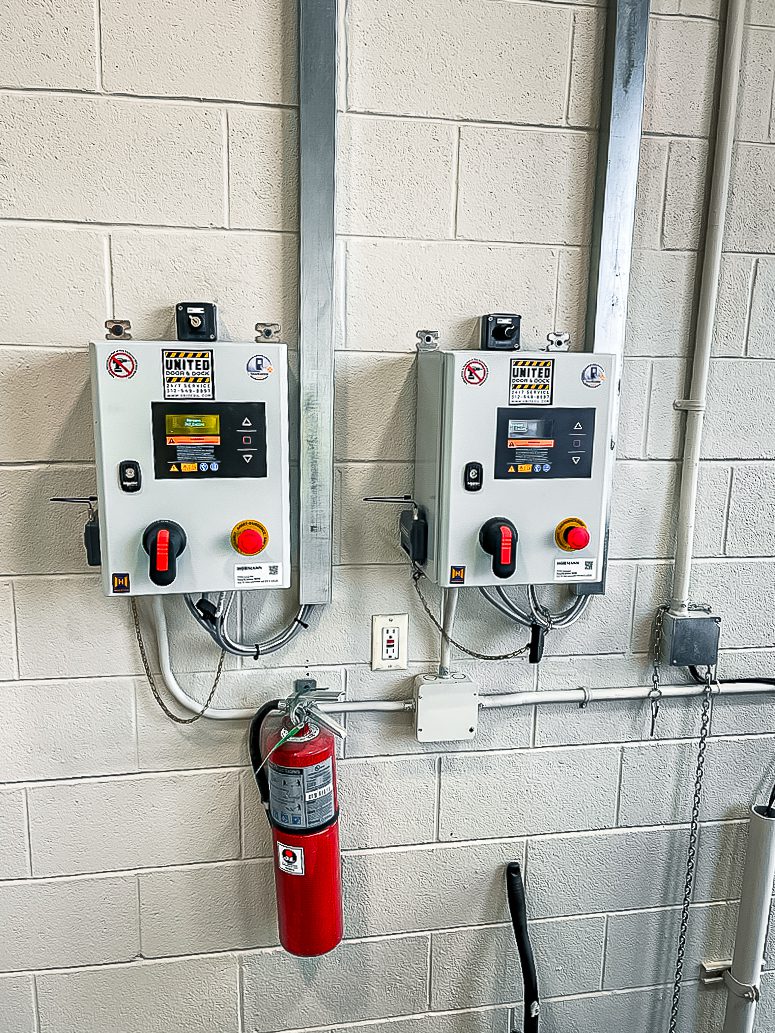
Challenges and Considerations
Commercial dock door and leveler automation is revolutionizing the loading dock industry, offering significant benefits in terms of efficiency, safety, and cost savings. By adopting this cutting-edge technology, businesses can stay competitive in today’s fast-paced supply chain environment.
As we’ve explored, there are numerous factors to consider when deciding whether to invest in dock automation, from cost and compatibility to employee training and ongoing maintenance. By carefully weighing these considerations and working with experienced professionals, businesses can find the right automation solutions to optimize their loading dock operations and unlock the full potential of this exciting technology.
United Door and Dock works hard to stay current on all the latest door and loading dock technology advancements. Our industry professionals would love to recommend ways we can help your facility run more safely and efficiently. If you are ready to level up your building, call us!
